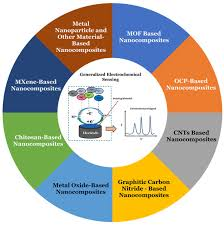Revolutionary Lead Ion Detection with Platinum Nanoparticles
In the age of increasing environmental awareness and health-conscious living, the need for accurate and rapid detection of heavy metals like lead in water and soil has become more critical than ever. One of the most groundbreaking advances in this field is the use of platinum nanoparticles (PtNPs) for lead ion detection. This cutting-edge technology is reshaping how scientists and environmental agencies monitor toxic contamination—and it's more effective, efficient, and eco-friendly than traditional methods.
Why Is Lead Detection So Important?
Lead (Pb²⁺) is a toxic heavy metal that poses serious health risks, especially to children. Even low levels of exposure can result in irreversible damage to the brain and nervous system. Contamination can come from old pipes, industrial waste, or even certain paints and cosmetics. Early detection is key to preventing widespread health issues and environmental damage.
Enter Platinum Nanoparticles: Small Particles, Big Impact
Platinum nanoparticles are ultra-small particles of platinum, typically ranging from 1 to 100 nanometers in size. Their unique surface properties, high conductivity, and excellent catalytic activity make them ideal for chemical sensing applications.
When it comes to detecting lead ions, PtNPs act as sensitive and selective probes. They can be integrated into various detection systems, including electrochemical sensors and colorimetric assays. The result? Ultra-fast, highly sensitive detection of lead ions, even at trace levels.
How It Works
Here’s a simplified overview of the process:
-
Functionalization: The platinum nanoparticles are often coated or modified with molecules that selectively bind to lead ions.
-
Interaction: When a sample containing Pb²⁺ is introduced, the ions bind to the functionalized PtNPs.
-
Signal Generation: This binding event triggers a detectable signal—either a change in color, fluorescence, or electrical current—depending on the type of sensor used.
-
Quantification: The signal is measured and correlated to the concentration of lead ions in the sample.
Key Advantages of PtNP-Based Detection
-
High Sensitivity: PtNPs can detect lead ions at parts-per-billion (ppb) levels.
-
Speed: Detection can occur in minutes, not hours.
-
Portability: Sensors can be miniaturized for use in handheld devices—perfect for field testing.
-
Eco-Friendliness: Compared to traditional methods that often require hazardous reagents, PtNP-based sensors are cleaner and safer.
Applications Beyond the Lab
This technology is already finding its way into diverse applications:
-
Water quality monitoring in households and municipalities
-
Soil testing in agricultural fields
-
Consumer safety testing for cosmetics and toys
-
Rapid screening in industrial wastewater management
What’s Next?
As research advances, platinum nanoparticles may be combined with other nanomaterials like graphene or quantum dots for even greater performance. Moreover, efforts are underway to develop low-cost, reusable sensors that can be widely distributed, especially in developing regions where lead contamination is a growing concern.
Final Thoughts
Platinum nanoparticle-based lead ion detection is more than just a scientific breakthrough—it's a step toward a healthier, safer planet. As this technology continues to evolve, it holds the promise of making clean water and toxin-free environments accessible for all.
Stay tuned for more updates on this exciting frontier in nanotechnology and environmental science!
International Research Awards on Advanced Nanomaterials and Nanotechnology
Nomination Link  https://nanotechnology-
https://nanotechnology-
Visit Our Website  sciencefather.com
sciencefather.com
Contact Us  : nanoenquiry@sciencefather.
: nanoenquiry@sciencefather.
Stay Connected Here:
Pinterest: https://in.pinterest.com/
Youtube: https://www.youtube.com/
Instagram: https://www.instagram.com/
Twitter: https://x.com/nanotech_award
Linkedin: https://www.linkedin.com/in/
Blogger: https://
Tumblr: https://www.tumblr.com/blog/
Whatsapp Channel: https://whatsapp.com/channel/


Comments
Post a Comment